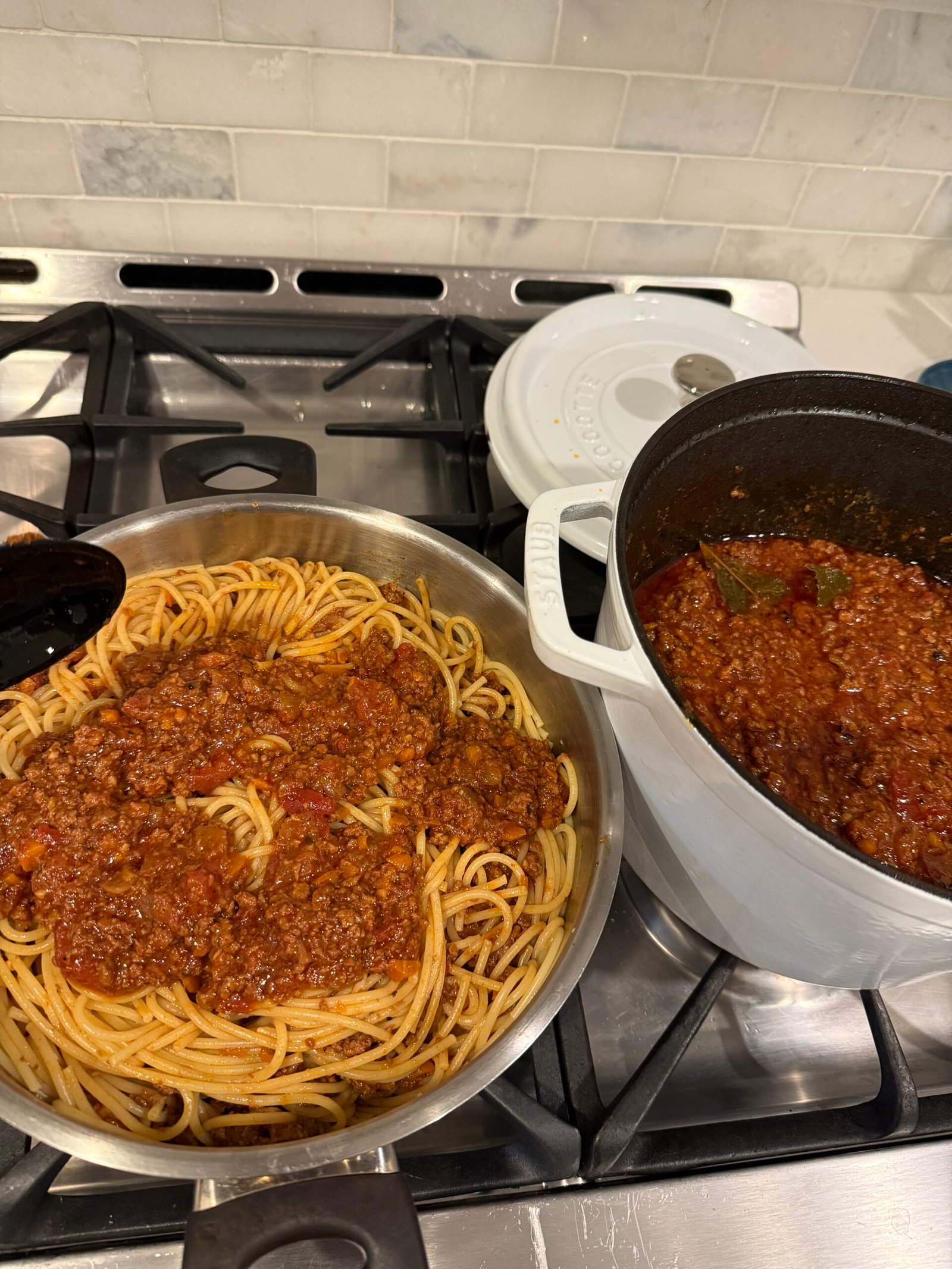There are mornings when my mind feels cluttered the moment I open my eyes.

My 14-year-old son, Aaron, thankfully gets ready for school on his own (yes, he even makes his own lunch, which is a tiny miracle I’m deeply grateful for).
But as soon as I walk into the office and log onto my computer, the day races ahead of me: back-to-back meetings in 30- or 60-minute bursts, wedged between quick reviews of tasking responses, briefing materials, and SOP drafts. I squeeze in replies to e-mails I’ve been avoiding since the day/s before — with a few more piling up by the minute.
By the time I get home, dinner prep awaits. (Sung does quite a lot, but I often end up walking our dog babies and shuttling Aaron to football practice or wherever else teenage life requires me to be.)
Every morning I tell myself, “Today I’m going to focus and get things done.”
Yet, when it’s time to clock out, I feel like something slipped through the cracks. I find myself wondering the same thing again and again:
“What did I actually accomplish today?”
Enter: MITs, or “Most Important Tasks”
Productivity experts love this concept, and for good reason.
MITs are the 2–3 most important things you need to accomplish today — not the most urgent, but the ones that will create the biggest results or meaning.
Remember that not all tasks are equal. Some move the needle. Others just fill time.
Examples:
- At work: “Complete draft of tomorrow’s meeting report” (more important than replying to 10 e-mails)
- At home: “Submit Aaron’s school forms on time” (more urgent than folding laundry)
- Personal: “Call my and Sung’s parents in Korea” (more meaningful than a 30-minute workout)
Why MITs matter (especially for us working moms)
As working moms, we live in micro-increments — five minutes here, ten minutes there. Between school drop-offs, meetings, dinner prep, and a dozen household details, our energy gets sliced into fragments. Trying to handle everything perfectly leads to the quiet exhaustion of never feeling “done.”
When I started identifying my MITs each morning, something unexpected happened: the guilt lifted.
Completing just two or three meaningful tasks for the day gave my days shape and purpose. I could finally end the workday thinking, “I did what mattered.”
My morning rule: Do the hardest MIT first
Every morning, I tackle the task I dread most. It’s usually the biggest one — the one that lingers in my mind. Once I push through it, momentum takes over. Finishing that one heavy lift early gives me this calm satisfaction, as if I’ve already conquered half the day.
Because let’s be honest 🙂 — that daunting task isn’t going anywhere. The longer I delay, the heavier it feels. Since mornings are when I’m most productive and my focus is sharpest, I lean into that energy that allows for “the flow” (more on this in another post, I promise).
My routine: How I use MITs every day
1. Take 5 minutes to write MITs before checking e-mail
This one is crucial. Before opening your inbox — before letting other people’s priorities dictate your day — take five quiet minutes to decide what you need to get done.
Use a notebook, planner, sticky note, or app (Notion, Todoist, anything simple). I use a simple, straightforward spiral notebook, which Sung swears by.
Example:
- MIT #1: Finalize briefing slide deck
- MIT #2: 30-minute 1:1 coaching with team member
- MIT #3: Drive to son’s football game + snack duty
Keep it to 2–3 items total — not 10. Include one personal MIT, something that nourishes you. For me, that’s reading even a few pages every day. For others, it might be a 30-minute walk, journaling, or working toward a certification/license.
(Last year, Sung, Aaron, and I randomly enrolled in an evening art class at our local community rec center! The three of us learned to sketch together in one class. Don’t laugh; it was one of the best things we did all year.)
2. Ask: “What will make the biggest difference?”
When setting your MITs, shift the question from “What do I have to do?” to “What will make today truly meaningful or impactful?”
Answering e-mails might feel productive, but deciding your team’s project direction will have far more influence on the week.
3. Set artificial deadlines
Leverage Parkinson’s Law: “Work expands to fill the time available.”
If your task could take all day, give it a fake deadline — “done by 10 am.” You’ll be amazed at how sharply your focus increases.
Finishing MITs early frees up the afternoon for unexpected things; and all working moms know there will always be unexpected things.
4. Say “no” (tactfully)
When you’re deep in focus and someone pings you or swings by with a “quick” request, try:
“I’m in the middle of a priority. Can I get back to you when I come up for air?”
Simple, respectful, clear.
If it’s not an MIT, it’s probably not urgent. The clarity of knowing your top priorities gives you permission to protect them.
5. End-of-day reflection
Before logging off, check off your MITs. Even one completed item counts as a win. That visual confirmation gives your brain a small but powerful dopamine hit — motivation for tomorrow.
I also jot down my MITs for the next day before leaving work. It creates continuity and makes tomorrow’s start infinitely smoother.
What productivity experts say about MITs (+book recommendations)
James Clear (Author of Atomic Habits)
“Small clarity prevents big chaos.”
MITs provide that small daily clarity. When it becomes a habit, you eventually gain clarity about the direction of your entire life.
Cal Newport (Author of Atomic Habits)
“To produce at your peak level you need to work for extended periods with full concentration on a single task free from distraction.”
Setting MITs is the simplest way to avoid wasting focus. Instead of asking “What should I do next?” dozens of times a day, you simply concentrate on the 2-3 tasks you’ve already identified.
David Allen (Author of Getting Things Done)
“You’ve got to think about the big things while you’re doing small things, so that all the small things go in the right direction.”
MITs are the tool that helps you check this “right direction” every single day.
To my fellow working moms
Our days are a constant series of decisions. Even choosing just three things wisely is an act of excellence.
It’s okay not to do everything. If you did what mattered most, that’s a successful day filled with tiny big wins.
At first, “only three tasks” felt unrealistic — too small for everything I juggle. But over time, those three tasks reshaped not only my workdays but my mindset.
Because research shows: endlessly long to-do lists don’t make us productive — they make us anxious.
So from now on, give yourself permission to focus on what truly counts.
How about a challenge? 🙂
Before bed, or first thing tomorrow morning, write down three MITs:
- One for work (e.g., finalize slides for tomorrow’s meeting)
- One for home (e.g., order dog food, wash comforters)
- One for yourself (e.g., call your parents in Korea, journal for 10 minutes)
If you like structure, try the free Emergent Task Planner by David Seah. Or, many productivity experts and authors also seem to love simple 3×5 index cards.
Try it for a week and let me know what shifts. You might just find, like I did, that three focused tasks can transform not only your days but also your peace of mind.
I wish you a joyful, triumphant day filled with tiny wins!






Leave a Reply